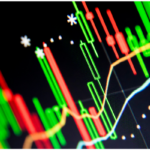One of the biggest potential use cases for the cryptocurrency world lies in stablecoins. These tokens are pegged to other assets, such as fiat currency. The price of these tokens is designed to remain constant and can be useful for conducting monetary transactions on the blockchain.
However, more prominent blockchains have had problems with the high gas fees on these transactions. Fees continue to rise and are driving many away from using stablecoins.
This is where Gnosis comes in with its stablecoin, xDAI. This token is designed to be a stablecoin with low fees, fast transactions and high security.
Table of Contents:
Overview of Gnosis and xDAI
Gnosis is attempting to solve a problem that many major blockchains face, which is expensive gas tariffs. These fees can make transactions on the blockchain inefficient both in terms of time and money. Blockchains like Ethereum rely on a proof-of-work (PoW) system to verify transactions. This method of consent involves using computing power to earn the right to validate and earn rewards. This system uses huge amounts of energy and is very expensive. As such, Ethereum has struggled to handle the strain of increased demand.
Gnosis is a blockchain compatible with Ethereum Virtual Machine (EVM). While it is centered on Ethereum, it uses a different consensus method called proof of stake (PoS). This method involves token holders giving tokens to the chain as collateral in exchange for the right to validate transactions. This method is much more accessible to the average blockchain enthusiast and can enable a much faster and scalable consensus solution. For example, Gnosis chain transactions average around $0.01, while they are closer to $3 to $5 on the Ethereum mainnet. In addition, Gnosis processes transactions within five seconds, while Ethereum can typically take a minute or more at peak times. These features make Gnosis more attractive both economically and in terms of speed.
GNO is the token that powers the Gnosis chain. This token is used to secure the chain through staking and governance on GnosisDAO.
xDAI is the other token on the Gnosis chain. It is a stablecoin pegged to DAI, which is pegged to USD. xDAI is essentially the same as DAI, but xDAI is on the Gnosis chain while DAI is on the Ethereum chain.
Why do people use xDAI?
People use both the Gnosis chain and the xDAI token for several reasons. Perhaps the most important reason is the reliability associated with the chain and token. The chain is reliable in that it maintains low transaction fees and fast processing times through its PoS system, and xDAI offers reliability as it is a stablecoin pegged at $1.
The Gnosis chain is used for a variety of projects. One of the largest projects is SushiSwap, a decentralized exchange (DEX) that allows investors to trade cryptocurrencies in a peer-to-peer manner. SushiSwap is one of the largest DEXs, which supports swapping, lending and leverage.
Another great project on Gnosis is Chainlink. This project brings smart contracts and blockchain technology to the mainstream by using the technology to provide data solutions. The project uses the Gnosis chain to access the Ethereum network avoiding hefty transaction fees.
xDAI serves two main purposes: currency for gas taxes and stable payments. Transaction fees are covered by xDAI, which also helps keep transaction fees low. It is used as a stable form of payment, as it is always worth $1.
Gnosis and history xDAI
In 2018 at ETHBerlin, a group of computer engineers and technology investors were discussing the state of stablecoins. More specifically, they discussed high gas tariffs and low speeds. Eventually, they came up with the idea of creating a sidechain and connecting a stablecoin.
Within a month, Gnosis and xDAI were launched. Since then, market capitalization and volume have grown considerably. Therefore, developers have continuously added validators to the PoS system to keep up with the increase in demand.
Where to buy xDAI
You cannot buy xDAI directly as it is a bridge from DAI on the Ethereum mainnet. For this reason, you will have to buy DAI using a trading platform and then connect it to xDAI. Some of the best places to buy DAI are Coinbase Global Inc. (NASDAQ: COIN), FTX and Gemini.
Once you purchase DAI, send it to a wallet and then go to the bridge from DAI to xDAI through the Gnosis website. Enter the amount to be filled and execute the trade.
Gnosis Blockchain vs. Other Blockchains
Gnosis is an Ethereum-compatible blockchain, which means it uses all the main tools of the Ethereum blockchain, but allows creativity in terms of consensus model and decentralized application distribution (dApp). Gnosis created a new chain based on Ethereum and changed the consensus model to PoS to solve the main problems on the Ethereum mainnet.
While the platform solves issues related to transaction fees and speed, it also means that the Gnosis chain is less decentralized, as it depends somewhat on the Ethereum chain. However, it also uses its own consent method, so it may not be as secure as the Etheruem network. Overall, the Gnosis chain solves a couple of major problems with the Ethereum mainnet, but not without drawbacks.
How to store gnosis (xDAI) safely
Since xDAI is not supported by any of the major exchanges, you need a wallet to store your xDAI. You can choose between two types of wallets: hardware and software. Hardware wallets are often considered the safest way to store cryptocurrencies.
Hardware wallets store the keys needed to send cryptocurrencies on a physical device. If the physical device is not present to grant the keys, encryption cannot be sent from the wallet.
Ledger is a hardware wallet brand that supports sending and receiving xDAI. It currently offers Nano S and Nano X models. The Nano S provides basic security while the Nano X focuses on ease of use with features like a larger screen and Bluetooth connectivity.
So, is it worth using xDAI?
xDAI has solved the problems and attracted some of the biggest projects in the crypto space. These projects may not depend solely on Gnosis and xDAI, but the user experience can be improved through their use. So, if you’re looking to have transactions with smaller fees and faster processing times, it might be worth taking a look at using xDAI in your crypto initiatives.


